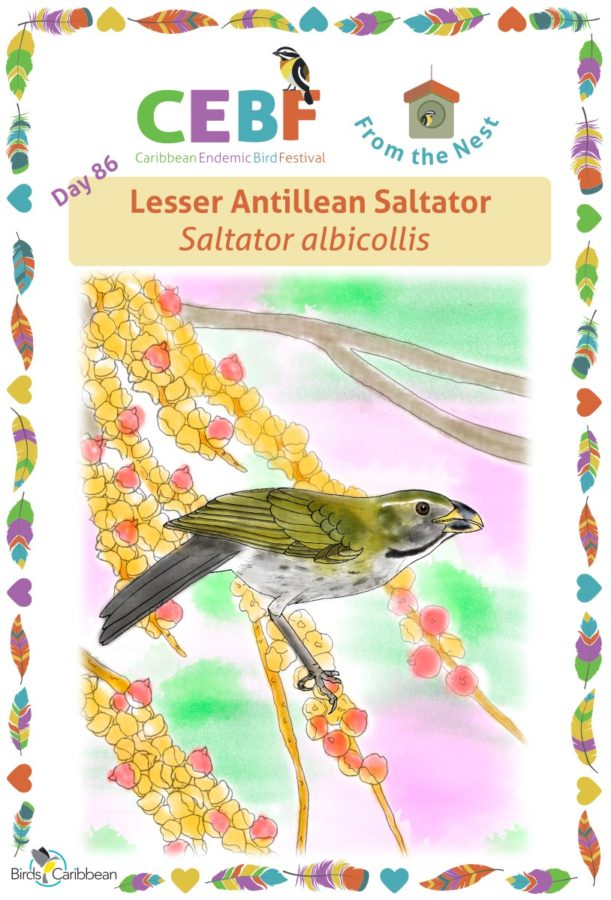Celebrate the Caribbean Endemic Bird Festival (CEBF) with us! Our theme in 2022 is “Loving Birds is Human Nature” Have fun learning about a new endemic bird every day. We have colouring pages, puzzles, activities, and more. Download for free and enjoy nature with your family at home.
Endemic Bird of the Day: Lesser Antillean Saltator
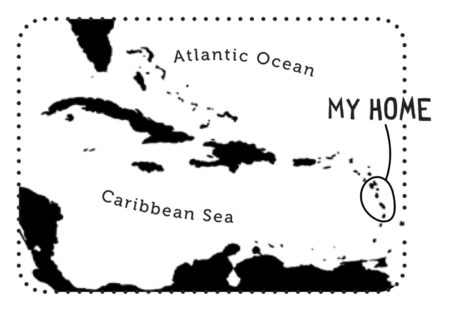 The Lesser Antillean Saltator, as its name indicates, is endemic to the Lesser Antilles region. It lives on only four islands in the World: Guadeloupe, Dominica, Martinique, and Saint Lucia.
The Lesser Antillean Saltator, as its name indicates, is endemic to the Lesser Antilles region. It lives on only four islands in the World: Guadeloupe, Dominica, Martinique, and Saint Lucia.
This bird is not well-known because it has a dull olive-green plumage that makes it difficult to observe in the forested habitat where it lives. Its head has a whitish eyebrow stripe, underparts are whitish streaked with olive-green, and it has a large blackish bill with a yellow tip and gape. It shows a heavy black mustache stripe. Males and females look alike. Juveniles have duller facial markings and breast streaks. This Saltator is the terror of bird banders because of its powerful beak—it can be very painful if not handled properly.
Lesser Antillean Saltators can be found in mangroves, dry forests, swamp forests, and in urban areas. But they prefer to forage in trees rather than on the ground for fruits, buds, flowers, and sometimes insects. If you’re lucky, you may catch a glimpse as it occasionally darts into gardens to feed on a bit of fruit – like papaya, guava, or mango.
One sure way to know if a Lesser Antillean Saltator is near is to listen for its distinct song—a series of harsh, loud notes that rise and fall and can be heard from very far away. Call notes include faint “tsi” and sharp “chink.”
The main breeding season is from April to July, similar to many other species in the Caribbean. The nest is built in the form of a cup using twigs and leaves. Clutch size; 2-3 light greenish-blue eggs with black lines concentrated at the blunt end of the egg. Both parents feed the chicks and remain with them for some time after they have fledged the nest.
The Lesser Antillean Saltator is listed as ‘Least Concern’ by the IUCN and is considered fairly common on the islands where it occurs. However, it prefers to live in dry forests and lower elevation shrubs which are being cleared for agriculture and, on some islands, fuelwood. Learn more about this species, including its range, photos, and calls here.
Colour in the Lesser Antillean Saltator
Download our West Indies Endemic Bird colouring page. Use the photos below as your guide, or you can look up pictures of the bird online or in a bird field guide if you have one. Share your coloured-in page with us by posting it online and tagging us @BirdsCaribbean #CEBFfromthenest
Listen to the song of the Lesser Antillean Saltator
The song of the Lesser Antillean Saltator is a series of loud musical notes that rise and fall.
Puzzle of the Day
Click on the image below to do the puzzle. You can make the puzzle as easy or as hard as you like – for example, 6, 8, or 12 pieces for young children, all the way up to 1,024 pieces for those that are up for a challenge!
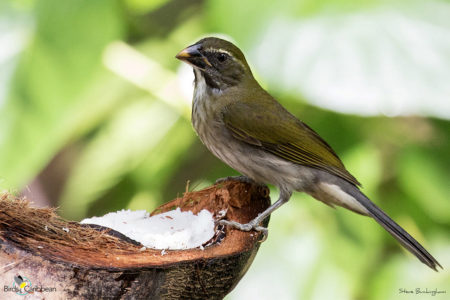
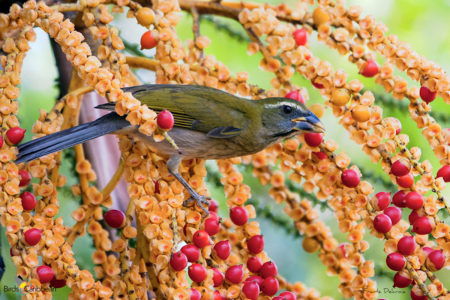
Activity of the Day
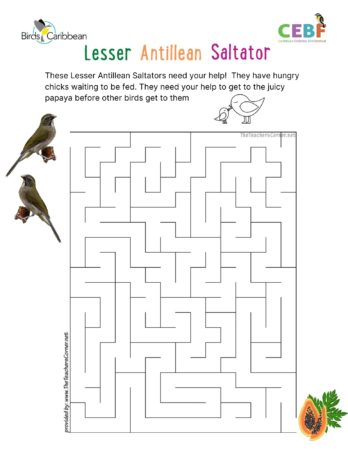 FOR KIDS: Breeding season for the Lesser Antillean Saltator is between February and August. This Caribbean endemic builds its nest as a deep cup made from twigs and leaves and will have two or three hungry chicks to feed once its egg hatch! These nestlings love to eat fruits as well as parts of flowers and plants. Can you help these Lesser Antillean Saltators find their way through our maze to fetch the delicious papaya to feed their chicks? You can find the correct route here.
FOR KIDS: Breeding season for the Lesser Antillean Saltator is between February and August. This Caribbean endemic builds its nest as a deep cup made from twigs and leaves and will have two or three hungry chicks to feed once its egg hatch! These nestlings love to eat fruits as well as parts of flowers and plants. Can you help these Lesser Antillean Saltators find their way through our maze to fetch the delicious papaya to feed their chicks? You can find the correct route here.
FOR KIDS AND ADULTS: Enjoy the video below of a Lesser Antillean Saltator feeding! You can see this bird using its heavy black-and-yellow bill to pluck berries from this tree. Lesser Antillean Saltators feed mainly on plants matter, including fruits, buds, and some flowers and petals; they also sometimes eat insects.

